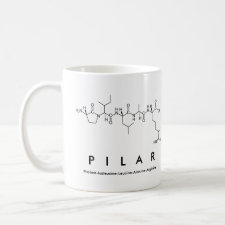
Authors: Paniagua-González G, Fernandéz-Hernando P, Durand-Alegría JS
Article Title: Determination of digoxin in serum samples using a flow-through fluorosensor based on a molecularly imprinted polymer.
Publication date: 2008
Journal: Biosensors and Bioelectronics
Volume: 23
Issue: (11)
Page numbers: 1754-1758.
DOI: 10.1016/j.bios.2008.01.018
Alternative URL: http://www.sciencedirect.com/science/article/B6TFC-4RNJ8M9-3/1/49cf5e650fedb738eed0abdf86ac3f96
Abstract: This work describes the development of a competitive flow-through FIA assay for digoxin using a molecularly imprinted polymer (MIP) as the recognition phase. In previous work, a number of non-covalent imprinted polymers were synthesised by "bulk" polymerisation. The digoxin binding and elution characteristics of these MIPs were then evaluated to obtain a highly selective material for integration into a sensor. The optimum MIP was synthesised by photo-initiated polymerisation of a mixture containing digoxin, MAA, EDGMA and AIBN in acetonitrile. The bulk polymer was ground and sieved and the template removed by Soxhlet extraction in MeOH/ACN. The MIP was packed into a flow cell and placed in a spectrofluorimeter to integrate the reaction and detection systems. The physical and chemical variables involved in digoxin determination by the sensor (nature and concentration of solution, flow rates, etc.) were optimised. Binding with the non-imprinted polymer (NIP) was also analysed. The new fluorosensor showed high selectivity and sensitivity, a detection limit of 1.7á+á10-2áμgál-1, and high reproducibility (R.S.D. of 1.03% and 1.77% for concentrations of 1.0á+á10-3 and 4.0á+á10-3ámgál-1, respectively). Selectivity was tested by determining the cross-reactivity of several compounds with structures analogous to digoxin. Under the assay conditions used, in which the potential interfering compounds were in concentrations 100 times higher than that of the analyte, no interference was recorded. The proposed fluorosensor was successfully used to determine digoxin concentration of human serum samples
Author keywords: Digoxin, molecular imprinting, Fluorosensor, Human serum analysis



Join the Society for Molecular Imprinting

New items RSS feed
Sign-up for e-mail updates:
Choose between receiving an occasional newsletter or more frequent e-mail alerts.
Click here to go to the sign-up page.
Is your name elemental or peptidic? Enter your name and find out by clicking either of the buttons below!
Other products you may like:
 MIPdatabase
MIPdatabase









